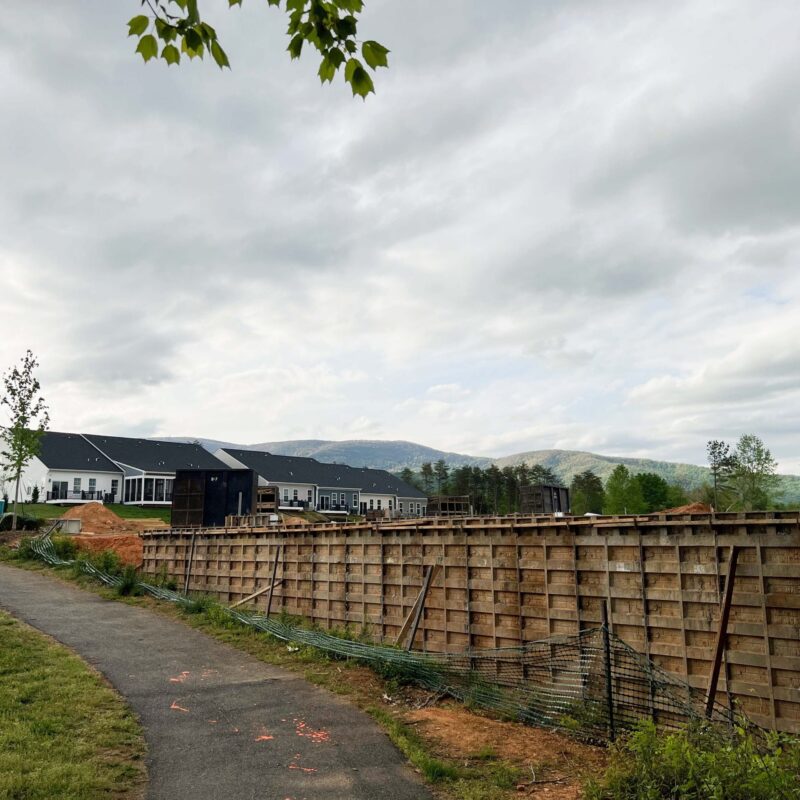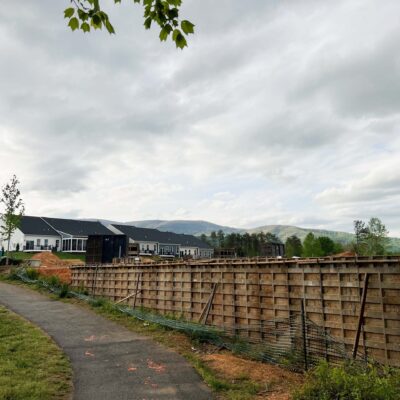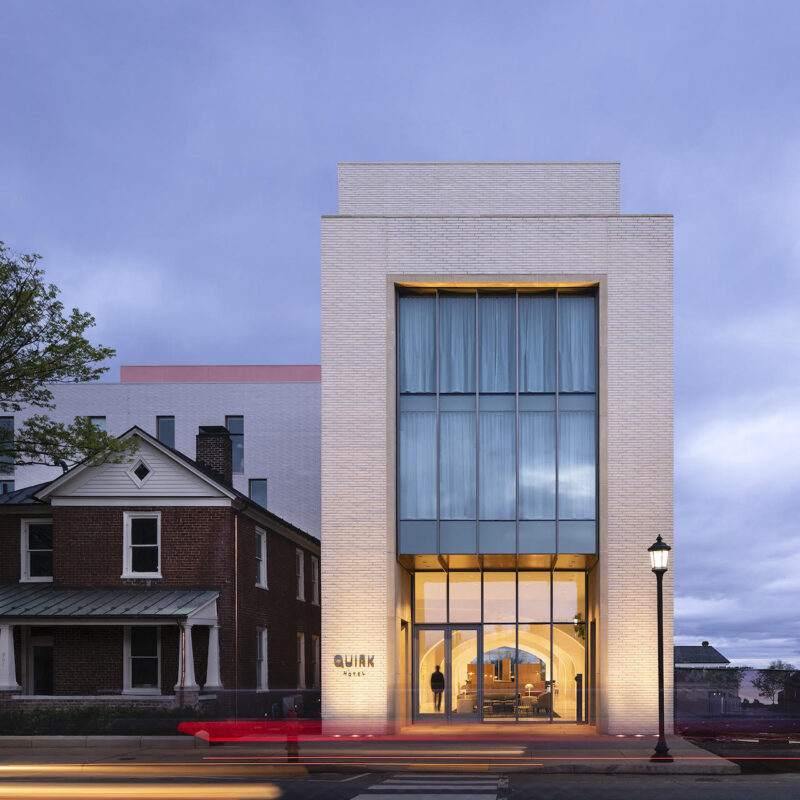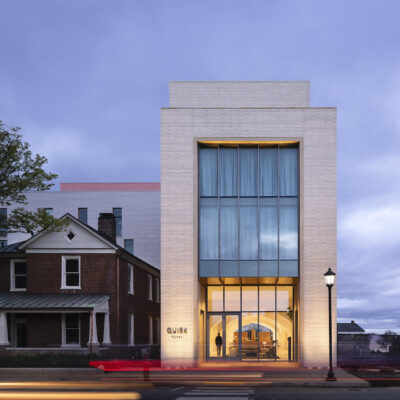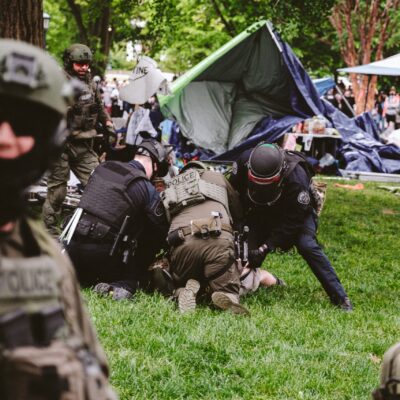Ten years from now, the corner of Locust and High streets will undergo a dramatic facelift. In place of the Martha Jefferson Hospital will spring hundreds of housing units, a grocery store, an assisted-living facility, a linear park, and office space, served by an underground parking lot. The intersection of Lexington Avenue and High Street will be reworked to make it safer for pedestrians, who will be drawn to the open landscaping of the redeveloped site. The 1920 portion of the hospital, the Patterson Wing, will remain, but the other buildings will be demolished, its concrete recycled as fill, its doors donated to Habitat for Humanity.
That’s a vision, anyway, that 13 graduate students from the UVA School of Architecture concocted for the redevelopment of the Martha Jefferson Hospital site on Locust Avenue, which will be vacated in 2012 when the hospital migrates to its new Pantops building. The hospital plans to sell to a developer, and so students shared renderings, models and explanations of how the huge 13.6-acre parcel could open up with an urban, mixed-use redesign in three phases with about a dozen Martha Jefferson neighbors.
 Architecture grad students from UVA envisioned the Martha Jefferson Hospital site with the Patterson Wing, the oldest portion, as a centerpiece of redevelopment. |
The students had tried to find creative ways to create courtyards and “live-work” units—some of which looked a bit like a tetris game in renderings—but a resident was skeptical of the square, modernistic buildings. In general, though, the neighbors seemed impressed by the work, and particularly a timeline for redevelopment that the class put together, which optimistically forecasted a completed redevelopment in 2018.
“It’s stunning the depth that you put into it,” said Francis Caruccio, who lives on Lexington Avenue. “And from someone who lives in the neighborhood, what it does is bubbles up the next four or five years of the process to today and highlights what are the things that are going to be concerns.”
Those concerns include traffic, electricity, water, stormwater and construction. The good thing about Martha Jefferson redevelopment is that the current use is one of the most intensive possible, particularly in terms of water use and heavy traffic during shift changes.
“Is this just purely academic, or is there something we can hold onto here as we move forward?” asked Bruce Odell, who lives in the Martha Jefferson neighborhood. A student answered that the city and neighbors must be proactive instead of reactive in order for it to be a successful redevelopment.
For the most part, however, that answer lies with the hospital, and the developer it chooses. “I think it was a helpful exercise,” says Steve Bowers, Martha Jefferson spokesman. “Any company that we talk to seriously, we’re going to show them the students’ work and make sure that it has value not just for the sake of the exercise itself.”
What about the all important quest for a developer? “We’re on a path to, we hope, identify a redevelopment partner either in late summer or early fall. We’re talking to a number of different entities, and we’re focusing on the same criteria that we’ve been talking about all along, in terms of character, in terms of track record, in terms of financial strength. And we remain committed to finding one redevelopment partner who’s not just going to get the site entitled, carve it up, and sell it off.”
But at the presentation, Caruccio didn’t sound confident about the undetermined developer. “I suspect that when the developer starts on day one, we won’t see boards to 2018, we’ll see boards from today until they own the property.”
C-VILLE welcomes news tips from readers. Send them to news@c-ville.com.
